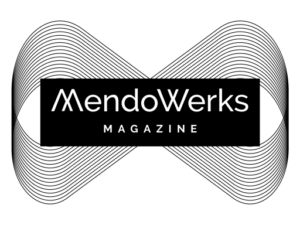
Get ready to experience the Geanies, an electrifying alt-rock band with a bluesy edge. Their highly anticipated debut EP Can’t See The Sun is available now through Mule Kick Records. Hailing from Venice, California, Geanies is fronted by talented lead singer and composer, Sean Michael Howe. Despite being just 19 years old, Howe possesses a unique sound and technical prowess that surpasses his years.
Joining Howe on this record are Eliot Lorango on bass and Ethan Maxwell on drums, forming a formidable power trio. The EP was produced by KP Hawthorn of Mule Kick Records and Steve Berns at Berns’ Fitting Room Studio in LA and the result is a polished and captivating sound.
Can’t See the Sun pays homage to legendary guitarists like Jimi Hendrix, Stevie Ray Vaughan, and B.B. King, embracing their post-modern musical influences. At the same time, the Geanies also draw inspiration from 90s alt-rock icons such as Alice in Chains, Soundgarden, and Foo Fighters, creating a unique blend of styles that combine into a vibe that’s all their own.
We had the privilege of sitting down with frontman and vocalist Sean Michael Howe from the band and got to delve deeper into his musical journey, influences, and the making of Can’t See The Sun.
Can you tell us about the inspiration behind your debut EP, ‘Can’t See The Sun’, and how it reflects your influences of blues and alt-rock?

Each song had its own inspiration and this line-up of tracks is a reflection of what we can do as a group. It feels like a good balance of different musical approaches we like. “Nowadays” is more introspective, “Here She Comes” is heavier but also has a groove, “I’d Like to Buy the World” has a blues-influenced shuffle quality, “Can’t See the Sun” represents more of a psychedelic tone, and “Bury Me” is in 6/8 so it has a bit of a waltz vibe and reflects more of those alternative influences. Since there are a lot of my blues influences in my lead playing as a guitarist, some of it bleeds into how I write or play riffs or chord progressions. The blues is something I connect with on a pretty personal level, and I feel it allows me to express myself in the most free way.
As a power trio, how do you work together to create such an electrifying sound?
I think a lot of it has to do with us trying to fill up the room as much as possible while playing live. Since we are a trio, we’re limited in our ability to create a larger sound in some ways, so the energy is different because each of us plays a significant part on our own but when we bring each element together it builds exponentially. We try to enjoy ourselves and be in the moment, no one is competing for space. This allows us to be fully in our respective zones and more powerful as a group when it all comes together.
What was the experience like working with producers KP Hawthorn and Steve Berns on the recording of the EP? How did they contribute to the overall sound and vision of the music?
KP and Steve really helped us create an organized environment in the short period we had to record the EP. Because of this we worked as efficiently as possible and came out with something we’re proud of. KP and Steve also contributed some pretty cool ideas, like suggesting harmonies, reverse guitar solos, effects, etc. There was a specific sound I was going for, more old-school analog and not modern digital, and they made that happen.
How did you develop your guitar skills at such a young age, and which guitar players have had the most significant impact on your style?

I started playing at age 8 and grew up jamming in my room a lot to Jimi Hendrix and Stevie Ray Vaughan records, and also had a lot of live playing experience as a teen. Because I was in a couple different groups over the years, I was able to expand my musical tastes and playing which helped shape how I play today. Besides Hendrix and SRV, some of my other favorite guitar players include Jeff Beck, Eddie Van Halen, Brian May, Alex Lifeson, and Tom Scholz.
“Bury Me” is the first single off the EP, and it captures a sense of uncertainty and angst. Can you delve into the themes and emotions explored in the song?
This song explores a lot of insecurities that are pretty common. It’s generally easy to dwell on these dumb thoughts that can bring you down, but when I was writing this song it was from a different perspective. I looked at the situation like I was an outsider looking in, instead of just me dealing with it personally. It was there that I found inspiration to get it down into a song.
The music video for “Bury Me” is said to have some tongue-in-cheek humor. Could you provide some insights into the concept and how it complements the song?
What I like about the song is that at first, it seems like it’s meant to be taken more seriously, but if you listen closer it’s more about the humor that can be found in looking back on periods of insecurity and self-doubt. The feeling of wanting to disappear or be “buried” in a specific moment, but then looking back in retrospect and laughing at how ridiculous those thoughts and feelings can be when we have some perspective. The video compliments this concept because it’s almost like a foggy uncomfortable memory or a bad dream that someone has, and they find the humor in the situation when reflecting back.
Connect with Geanies:
Website | Facebook | Instagram | Twitter
Are you enjoying MendoWerks Magazine? Receive updates each week directly in your inbox. Sign up for the newsletter here.
